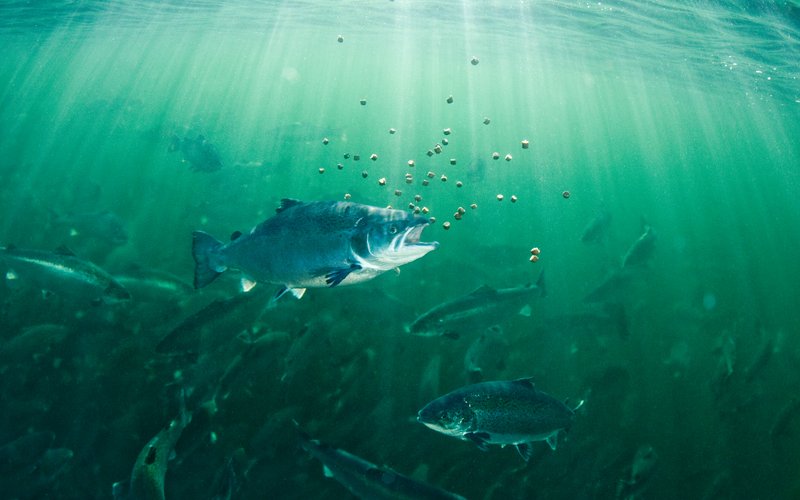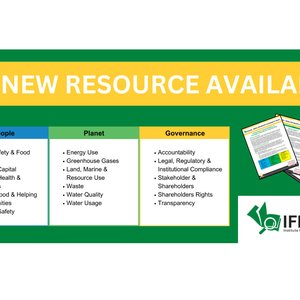OPINION
Sustainable aquaculture: The path forward
Dave Robb, Cargill Aqua Nutrition Group Sustainability Lead
The United Nations Food and Agriculture Organization (FAO) has highlighted the need for aquaculture to grow in order to help feed the growing human population to 2050 – but that growth has to be managed sustainably. For the past 25 years, the use of marine ingredients in aquaculture has been a subject of concern. In the 1980s and 1990s, many farmed fish diets were predominantly based on fishmeal and fish oil, both of which are rich sources of nutrients, proteins, vitamins, minerals, and fatty acids. However, as the industry expanded, the demand for these marine resources grew in parallel, raising critical questions about the sustainability of using fish to feed fish, especially when these marine resources could potentially feed people directly.
The solution has been to convert less palatable fish into high-demand products like salmon, seabass, seabream, or shrimp while ensuring that our sourcing practices have minimum impact on marine ecosystems. However, as aquaculture grows further to feed more people, so does the potential demand for fishmeal and fish oil, which is also sought after by other industries. With this increasing competition for a finite resource, how do we identify and develop sustainable alternatives while continuing to use these marine ingredients responsibly?

Achieving sustainable fisheries management is complex. When a fishery is under the control of a single nation, it requires leadership by the national regulators to adhere to the FAO Code of Conduct for Responsible Fisheries, ensuring proper stock assessments and regulations. The challenge amplifies when fisheries straddle multiple nations, necessitating cooperation among neighboring regulators and fishermen while fishing rights are very politically sensitive topics for all coastal nations.
Climate change further exacerbates these challenges as warming waters cause fish stocks to migrate, sometimes crossing national boundaries and affecting fishing access and rights. The case of mackerel in the Northeast Atlantic, which has shifted its habitat between Norway, Iceland, and EU countries, exemplifies the need for international collaboration in fishery management to prepare for such future changes.
Despite these hurdles, collaboration and partnerships remain paramount. Effective fishery management hinges on cooperation between fishermen, regulators, and market representatives. The Fishery Improvement Project (FIP) is a notable example, bringing together diverse stakeholders to enhance fishery management practices.
A concept originally developed by the Sustainable Fisheries Partnership (SFP), Fishery Improvement Projects (FIPs) play a crucial role in promoting sustainable practices. These projects are collaborations among fishers, processors, suppliers, and conservation organizations aimed at improving the sustainability of fisheries. FIPs operate by identifying key environmental challenges and setting specific measurable goals to address them. They focus on implementing changes that can lead to the successful assessment against the MarinTrust standards specifically developed for marine ingredients, or to certification of the fishery by standards such as the Marine Stewardship Council (MSC).
FIPs are instrumental in driving improvements by setting time-bound goals, typically over five years, to achieve sustainable management. This structured approach ensures continuous progress and accountability, making it an effective tool in the quest for sustainable fisheries. MarinTrust’s Improvers’ Program is tailored for the marine ingredients sector, driving improvements at sea and in the processing factories and establishing a chain of custody of the products. Its recognition by the aquaculture sector provides an excellent entry point to a sustainable development pathway for a fishery engaged in marine ingredients. Beyond this, comprehensive FIPs may be more focused on achieving higher goals, such as MSC certification for the fishery.
Looking ahead, the continued use of marine ingredients in aquaculture is essential, provided they come from sustainably managed fisheries. To meet the growing demand and address environmental fluctuations, we must expand the pool of well-managed fisheries globally. This includes not only those providing fishmeal and fish oil but also those supplying fish for direct human consumption.
Countries like Japan, India, and Mauritania offer promising opportunities for sustainable fishery development. However, these areas also present unique challenges such as complex political environments and varying local regulations. Initiatives like the Fishery Improvement Fund, launched in collaboration with Finance Earth and WWF, aim to support these efforts, ensuring a sustainable future for global fish stocks.
In conclusion, sustainable fishery management is not just a commercial imperative but a broader ecological and social responsibility. While the journey is fraught with challenges, the potential benefits for ecosystems, local communities, and the global food supply are immense. By fostering international cooperation and embracing innovative management practices, we can secure responsibly sourced marine resources for future generations. Additionally, it is important to recognize that not all aquaculture depends on marine ingredients. Many producers are incorporating plant-based or alternative feed sources to enhance sustainability. Embracing these diverse strategies will ultimately secure the longevity and sustainability of the aquaculture sector.













